INSIDE ISSUE 19.41 | Oct. 9, 2020
 BIG STORY: ‘Norms out the window’ for general election, directors say
BIG STORY: ‘Norms out the window’ for general election, directors say
NEWS BRIEFS: Don’t expect a Winthrop poll ahead of Nov. 3
SPOTLIGHT: Conservation Voters of South Carolina
COMMENTARY, Brack: Activist high court keeps S.C. election barrier in place
LOWCOUNTRY, Ariail: You had to ask
FEEDBACK: Got some thoughts to share? Send them.
MYSTERY PHOTO: Off the top of your head, where is this?
HISTORY: Charleston Renaissance led to Lowcountry cultural boom
‘Norms out the window’ for general election, directors say

By Lindsay Street, Statehouse correspondent | Thousands of voters stood in lines and continued to request mail-in ballots this week as county election offices faced a busy first week of in-person absentee voting.
Many election offices also started training thousands of new poll workers, who will see their very first Election Day Nov. 3.
“There is no norm now for this year. Our norms went out the window back in June,” Greenville County Board of Voter Registration & Elections Director Conway Belangia said.
The state Election Commission reported Friday morning the state is averaging 21,000 in-person absentee voters daily and that 84,000 have voted so far. In 2016, where 2.1 million ballots were cast, the state saw 370,000 in-person absentee ballots.
The state has also received 480,000 mail-in ballot requests, and issued 420,000 of those ballots so far. In 2016, 140,000 mail-in ballots were counted.
Here is a look at how election offices across the state are faring so far:
In-person absentee sees some lines, hiccups
Some voters saw long lines to vote in-person absentee, which began Monday, but that wasn’t a rule across the state. In-person absentee voting is where voters go to a central location, usually their county office, and cast ballots on machines. The votes are stored and ready for digital uploading on Election Day.

Belangia said the first three days of in-person absentee voting in Greenville County saw 600 voters each day. Wait times edged three hours on Monday, but decreased to about 90 minutes by midweek.
Charleston County election director Joe Debney said the first day of in-person absentee voting brought more ballots than the entire first week of in-person absentee voting in 2016. More than 1,200 people voted each day in the first part of the week, he said.
The county has been processing in-person absentee ballots at the North Charleston Coliseum. The county has plans to open three other locations on Oct. 19. Waits for in-person absentee voting have been fewer than 30 minutes, Debney said.
“It’s not our first rodeo. We have led the state in absentee voting since 2014,” he said. “We’ve got our processes and procedures down.”
Jasper County’s election director, Jeanine Bostick, reported voters were “steadily” coming into vote in-person absentee, with 166 voters Monday and 178 Tuesday.
“That is more than usual. Sometimes when we open absentee, we don’t get the first voter until the middle of the month,” Bostick said.
Marlboro County’s election director, Lori Moses, said her office has been busy since Monday, which saw about 200 in-person absentee voters. On Wednesday, the ballot printer wouldn’t print, causing some hiccups. It was fixed later in the day.
Voters confused on witness signature requirement
Mail-in absentee ballots require a witness signature to be counted. This requirement was challenged several weeks ago, leading to a back-and-forth where judges struck the requirement and reinstated it. This week, the U.S. Supreme Court ruled the requirement stands.
“Four different rulings in the past two weeks has been a real rollercoaster ride; there was tons of confusion,” Greenville County’s Belangia said. He said his office has urged: “Don’t take the chance, just get the witness signature.” Debney of Charleston County said the conflicting rulings have been his office’s “biggest” source of voter confusion.
But directors in smaller counties said the confusion has been less of an issue for them.
“All the voters in Laurens County have been having their witness signature signed anyway,” election director Lynne West said. “We don’t usually have to throw many ballots out anyway with nonwitness signatures. Our voters are just used to doing that and they do it.”
Lots of people signed up to work polls for first time
National headlines have warned about a possible poll worker shortage for the general election over fears that the most poll workers tend to be older, a key demographic at risk in the pandemic. But South Carolina’s counties don’t appear to be suffering from any shortages.
 West said her “core group” of poll workers will still show up on Election Day, but that the county will have “a bunch of new folks.” She said her county is preparing for an 80 to 90 percent voter turnout, and will have the poll workers necessary to support that.
West said her “core group” of poll workers will still show up on Election Day, but that the county will have “a bunch of new folks.” She said her county is preparing for an 80 to 90 percent voter turnout, and will have the poll workers necessary to support that.
In April, the state Election Commission added a link to its homepage to help recruit poll workers. Counties around the state said that has helped.
Bostick of Jasper County said her office is at its maximum for poll workers.
“We still have people calling want to work,” she said. “It is a presidential (election) and the word has gotten out a lot of the seasoned poll workers don’t want to work because of COVID-19.”
Greenville County has 2,600 poll workers signed up,
“Greenville County citizens have stepped up to the plate: we have a full complement of poll workers who are getting trained,” Belangia said. “It’s going to make things a whole lot easier for us.”
He said he was “tickled” that so many signed up, but he also has concerns that “these people are not seasoned election officials … It’s going to be a learning experience for a lot of people.”
West said all poll workers in Laurens County will be able to receive two hands-on training sessions thanks to a grant. Bostick said her office is training poll workers every weekend through Oct. 24 to prepare.
Some counties are supplementing the pay poll workers get ($165) with grants.
“I guess you could say they’re taking a chance,” Belangia said of running polls in a pandemic. “We’re going to supplement their pay because of that.”
Processing mail-in ballots could cause delays
Charleston County’s Debney said his county will not have election results from mail-in ballots by the end of Election Day. The county was unable to open and process all of the mail-in ballots in 2016 and 2018 before midnight, either.
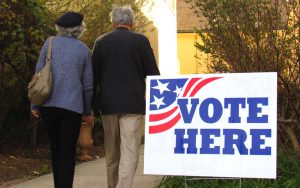 “The expectation needs to be set now that, because of the increase in paper ballots South Carolina has received, you will not have all those ballots counted on election night,” he said.
“The expectation needs to be set now that, because of the increase in paper ballots South Carolina has received, you will not have all those ballots counted on election night,” he said.
In South Carolina, ballots cannot be opened and counted until 7 a.m. on election day.
“Just the logistics of that makes it really tough,” Debney said.
Charleston County mailed more than 53,000 ballots in its first round, Debney said. To put that in perspective, the total number of mail-in ballots processed in 2016 was about 16,000.
But other counties — big and small — don’t share Debney’s concern.
Belangia of Greenville County said his office has sent nearly 32,000 ballots through the mail so far. He said he expects as many as 60,000 to return by Nov. 3.
“We have our system where we’ll get them done by 8:30 or 9 at night,” he said, adding some extra workers will be in the election office helping to open up ballots.
While Moses of Marlboro County said her office was experiencing some difficulties for sending out about the requested 2,000 mail-in ballots. She said the office was working on sending out ballots.
But she said there should be no problem counting mail-in ballots on Election Day.
“We have an eight-member board and they deputized some extra people to help them open and count,” Moses said. “I think we’ll be OK.”
Bostick of Jasper County said her office also doesn’t foresee any problems for counting ballots by midnight.
“You don’t see a problem but Murphy’s Law,” she said, referring to the adage of “anything that can go wrong will go wrong.”
Patience urged
The biggest issue foreseen for Election Day, predicted by multiple county directors, appears to be an expectation for the same voter frustrations aired on Election Day as any other Election Day.
“The only thing that brings major hiccups on Election Day is people failing to check their voter information ahead of time, and then they’re angry,” Moses said. “They’re upset but it’s their own fault.”
Belangia also said voter woes in Greenville County on Election Day will likely come from people going to the wrong polling location, forgetting to bring a photo identification and not being registered to vote. And, of course, he said they should expect lines.
“Be patient and don’t blame it all on the poll workers,” he said.
That frustration of dealing with angry voters has not been felt by all, however.
“Everybody in line has been friendly and patient and kind to our poll workers. It’s amazing,” West of Laurens County said. “You hear these horror stories of people getting all agitated but I’m telling you these voters have been so pleasant. They thank us.”
- Have a comment? Send to: feedback@statehousereport.com
Don’t expect a Winthrop poll ahead of Nov. 3
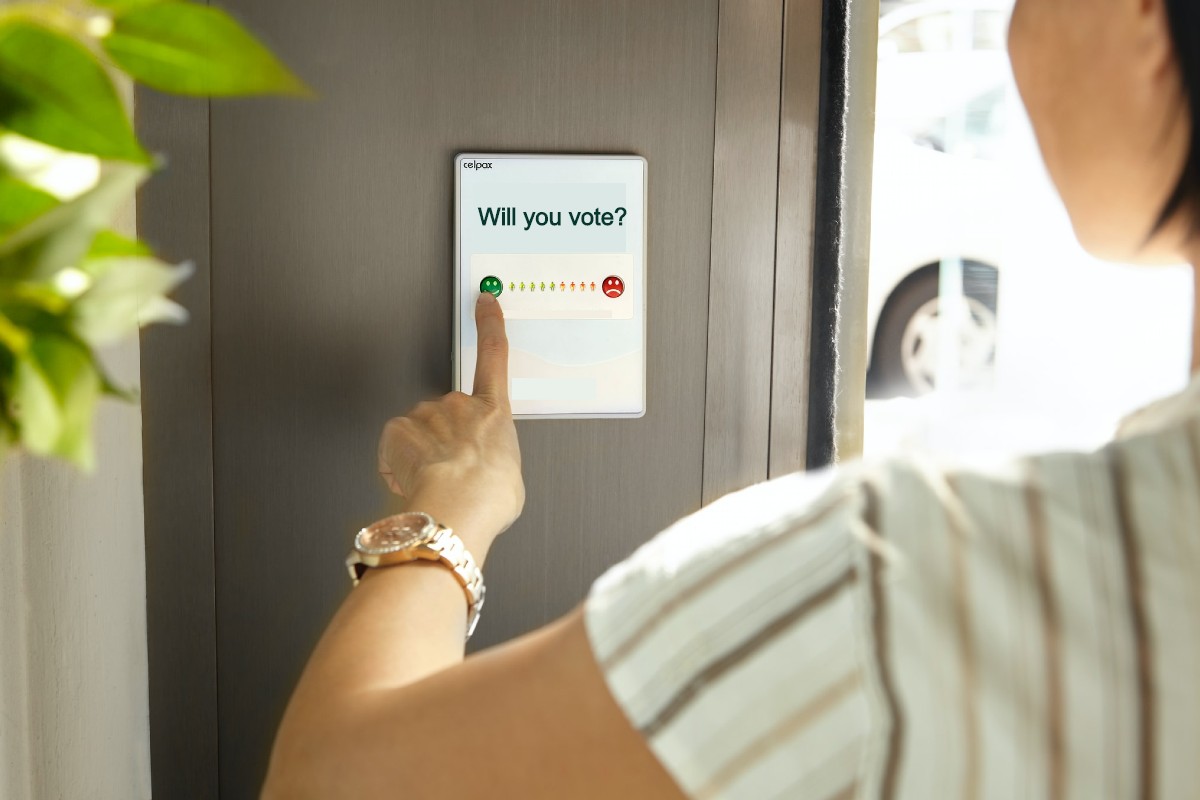
By Lindsay Street, Statehouse correspondent | The state’s political barometer won’t release any new findings ahead of the Nov. 3 election, according to Scott Huffmon, who heads the Winthrop Poll.
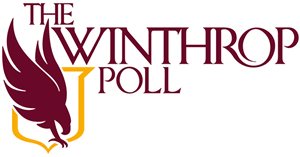 The poll typically comes out several times a year, and almost always has results leading up to any big election. Its last results were released Feb. 21, ahead of South Carolina’s Fe. 29 Democratic Presidential Preference Primary, which predicted a strong win for Vice President Joe Biden in the state.
The poll typically comes out several times a year, and almost always has results leading up to any big election. Its last results were released Feb. 21, ahead of South Carolina’s Fe. 29 Democratic Presidential Preference Primary, which predicted a strong win for Vice President Joe Biden in the state.
Huffmon said it’s “a first” that the poll will not come out before the general election. The polls have been running since 2007. He said the poll is another victim of the coronavirus pandemic. As other contract polls for government entities were pushed back, the money and the time for a political poll for the general election was unavailable. The polling team is working at one-third of typical capacity amid the pandemic, he said.
It would have been Winthrop’s first formal election poll since it received an A/B rating from FiveThirtyEight with 100 percent of races called correctly.
“Believe me, I am as peeved as anyone … A lot of bad luck collided,” Huffmon said. He finished the conversation with: “This too shall pass.”
In other news:
![]() State high court says no to private school vouchers. The S.C. Supreme Court ruled Wednesday that Gov. Henry McMaster’s allocation of $32 million in federal funding for one-time tuition grants for students to attend private schools violated the state’s constitution (specifically, Article XI, Section 4). McMaster shot back in a statement this week that the ruling “jeopardized” millions in CARES Act money allocated by the General Assembly to the state’s historically black colleges and universities (HBCUs), many of which are private. The ruling did not mention the governor’s stalled allocation of $2.4 million to HBCUs for technology updates nor the General Assembly’s Cares Act allocation.
State high court says no to private school vouchers. The S.C. Supreme Court ruled Wednesday that Gov. Henry McMaster’s allocation of $32 million in federal funding for one-time tuition grants for students to attend private schools violated the state’s constitution (specifically, Article XI, Section 4). McMaster shot back in a statement this week that the ruling “jeopardized” millions in CARES Act money allocated by the General Assembly to the state’s historically black colleges and universities (HBCUs), many of which are private. The ruling did not mention the governor’s stalled allocation of $2.4 million to HBCUs for technology updates nor the General Assembly’s Cares Act allocation.
Hurricanes and flooding labeled top domestic threats. Hurricanes and flooding, two natural disasters South Carolina experiences with some frequency, were labeled among top domestic threats in an Oct. 6 Department of Homeland Security Threat Assessment report. The threats were listed in the 26-page report along with Russian cyber threats and social media influence, the coronavirus pandemic’s threat to the national economy and violent extremists from within the United States. This week, the FBI busted an anti-government group’s plot to kidnap Michigan Democratic Gov. Gretchen Whitmer. But back to the hurricanes and floods (because that’s in the news, too, with Louisiana getting hammered yet again): “These disasters pose a significant threat to human health and safety, property, critical infrastructure, and homeland security while subjecting the nation to frequent periods of insecurity, disruption, and economic loss.”
Teen birth rate decreases, but state still high on national list. Fewer South Carolina teens, ages 15 to 19, gave birth in 2019 when compared with 2018, continuing a trend where the state’s teen birth rate has dropped 49 percent since 2010 and 71 percent decline since 1991, according to Fact Forward, formerly the South Carolina Campaign to Prevent Teen Pregnancy. While the overall rate decreased by 1.8 percent from 2018 to 2019, Black teenage girls gave birth at a higher frequency in that time period, an increase of 1.8 percent. The state currently ranks 11th in the nation for its teen birth rate.
S.C. poet laureate resigns lifetime post. Marjory Wentworth has resigned from her position as South Carolina’s poet laureate after 17 years. In a letter dated Sept. 28 informing McMaster, Wentworth noted her resignation was effective Oct. 1. Wentworth, who was appointed to the position for life by former Gov. Mark Sanford in 2003, left the position with the hope that the state legislature would make the position revolving among many poets in the state, instead of a lifetime appointment. Read more here.
Harrison continues to harry Graham. The race between U.S. Sen. Lindsey Graham and Democratic challenger Jaime Harrison is now a “toss up,” according to The Cook Political Report. Read more.
S.C. reports 3,311 dead so far in pandemic. While some highway signs around the state have urged drivers to buckle up and not drive under the influence (there have been 751 traffic deaths so far this year), S.C. officials reported Thursday that at least 3,311 South Carolinians have died from COVID-19 since March. Read more. South Carolina could see an additional 500 deaths by the end of the month. Meanwhile, the Centers for Disease Control and Prevention have predicted the national death toll could rise to 233,000 by the end of the month. Follow safety guidelines: Wear a mask. Wash your hands. Avoid large groups.
- Have a comment? Send to: feedback@statehousereport.com
Conservation Voters of South Carolina
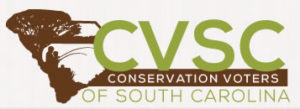 The Conservation Voters of South Carolina is a statewide nonprofit organization that fights for the Palmetto State’s air, water, land and energy through political action. The organization is bipartisan, pragmatic and effective.
The Conservation Voters of South Carolina is a statewide nonprofit organization that fights for the Palmetto State’s air, water, land and energy through political action. The organization is bipartisan, pragmatic and effective.
Through scorecards and advocacy at the Statehouse, CVSC holds South Carolina legislators accountable for their votes and actions. As a small organization that operates as a nonprofit and has a political action committee, we have a big impact. Learn more today by clicking any of the links below:
Activist high court keeps S.C. election barrier in place
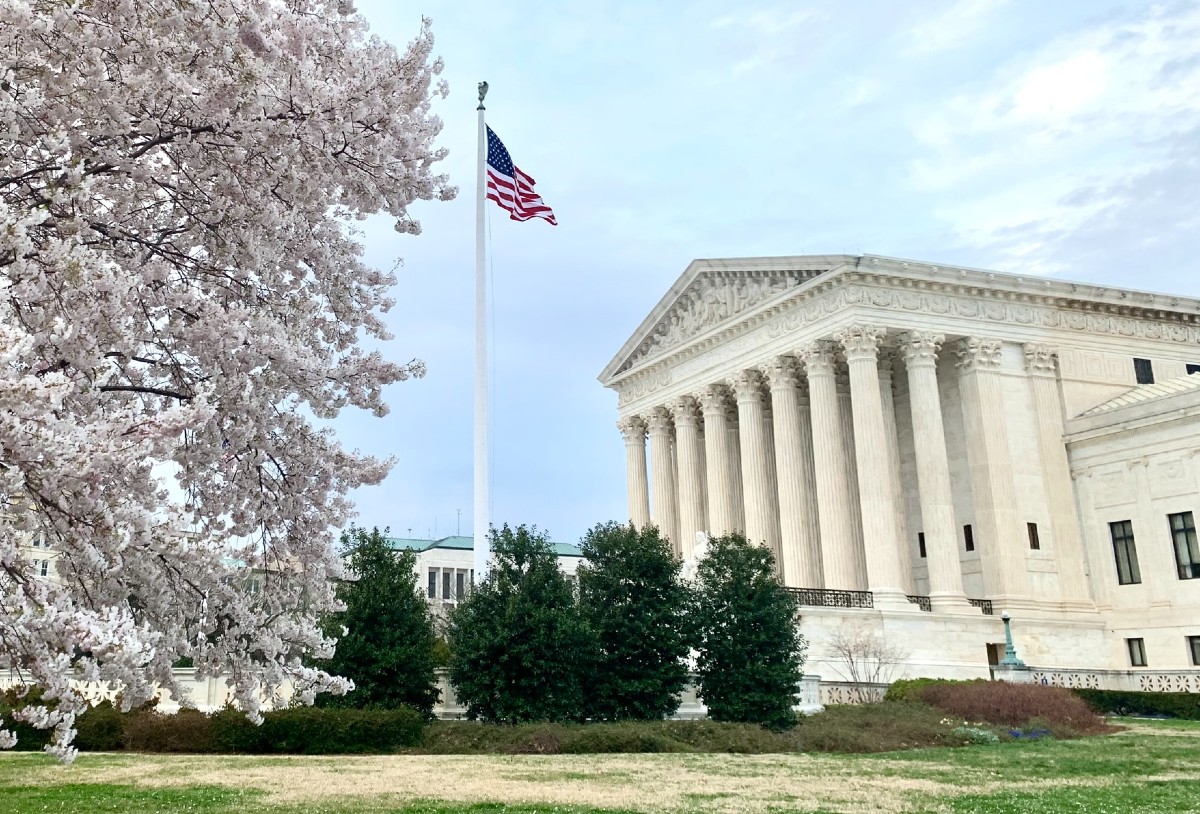
By Andy Brack, editor and publisher | So the now-conservative U.S. Supreme Court, whose justices rail about judicial activism, now has butted into South Carolina politics with, you guessed it, activism.
 At issue: How to cast ballots safely in November in the Palmetto State. The S.C. General Assembly recently voted to make it a little easier for state voters to cast ballots early in this coronavirus pandemic year by allowing anyone to vote absentee, thus dropping a list of reasons voters usually have to turn to if they want to vote early.
At issue: How to cast ballots safely in November in the Palmetto State. The S.C. General Assembly recently voted to make it a little easier for state voters to cast ballots early in this coronavirus pandemic year by allowing anyone to vote absentee, thus dropping a list of reasons voters usually have to turn to if they want to vote early.
But lawmakers in the GOP-dominated legislature didn’t drop a requirement from 1953 that the voter must have a witness to sign a mail-in ballot for it to be valid — even though such a requirement wasn’t in place earlier this year during primary elections. By ignoring a Democratic push to remove the witness signature requirement in the general election because of the pandemic, the whole mess wound up in the courts. The state Republican Party fought hard to preserve the witness signature requirement with arguments about election security and integrity, a spurious bogey-monster because there have been virtually no cases of voter fraud here.
U.S. District Judge J. Michelle Childs of South Carolina last month said the witness signature requirement likely would be confusing or deter voters as well as boost risk to exposure to coronavirus. She put the requirement on hold for the presidential election, only to have a three-judge appellate panel reinstate the requirement. And then, to add to the drama, the full U.S. Court of Appeals for the Fourth Circuit reversed the appellate ruling and put the requirement on hold again.
Finally, the U.S. Supreme Court got into the fray with an emergency order which, as is typical, wasn’t explained. But according to the Associated Press, Justice Brett Kavanaugh, writing only for himself, “said it wasn’t for a court to second-guess the lawmakers’ decision to retain the witness requirement during the pandemic. And he said that for many years the Supreme Court has ‘emphasized that federal courts ordinarily should not alter state election rules in the period close to an election.’”
In other words, a Republican-dominated Supreme Court got actively involved to support a Republican-backed political effort to keep a requirement that would, as Childs rightly suggested, cause voter confusion, create barriers and chill the election process.
Bottom line: Republicans in South Carolina took active steps for the umpteenth time to support barriers to voting. We see it every election season when precincts get moved or there’s a new push for some kind of “election integrity measure,” the boldest of which in recent memory required much tougher voter identification at polling places.
College of Charleston political scientist Gibbs Knotts worries about the impact that this back and forth has on voters.
“I am in the camp that I care about election integrity and that we have to have confidence in our election system, but we need more people to vote, not less to vote, and we need to reduce barriers, not put barriers in the way,” he said.
From a public service perspective, he said, it was troubling that people who want to use mail-in ballots may now have an extra worry — whether the witness signature is done properly so their ballot count.
“We need to be making this easier, not harder,” Knotts said. “There should never be any question that your vote shouldn’t count.”
The S.C. Progressive Network’s Brett Bursey, a longtime activist pushing for more election transparency and easier voting, said whoever is in power generally wants to keep voting systems the same as they’ve always been, which in South Carolina means with hurdles.
“The intrangencies of incumbency,” he called it, saying incumbents often have “no reason to change the existing system with existing voters.”
If you have questions about voting or need election information, you can contact the Election Protection Hotline at 866-OUR-VOTE (866-687-8683) or visit the S.C. Election Commission at www.SCVotes.gov.
- Andy Brack is editor and publisher of Statehouse Report. His column also is published in the Charleston City Paper, Florence Morning News, Greenwood Index Journal, The (Seneca) Journal, Camden Chronicle Independent and Hartsville Messenger. Have a comment? Send to: feedback@statehousereport.com.
You had to ask

Enjoy this week’s cartoon by Robert Ariail, republished from our sister newspaper, the Charleston City Paper. Love it? Hate it? What do you think: feedback@statehousereport.com.
Send us your thoughts
We love hearing from our readers and encourage you to share your opinions. But to be published, you’ve got to provide us with contact information so we can verify your letters. Letters to the editor are published weekly. We reserve the right to edit for length and clarity. Comments are limited to 250 words or less. Please include your name and contact information.
- Send your letters or comments to: feedback@statehousereport.com
Off the top of your head, where is this?
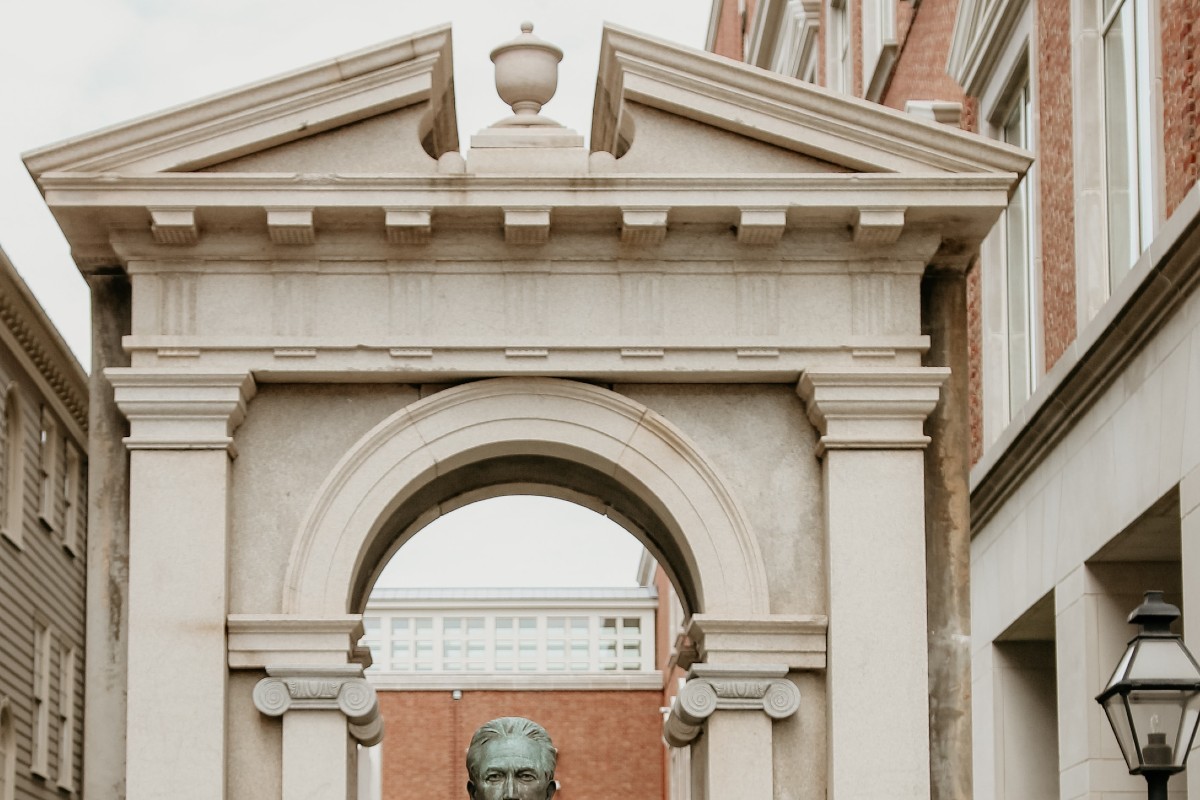
Here’s a South Carolina scene, but where is it? Send to feedback@statehousereport.com. And don’t forget to include your name and the town in which you live.
Our previous Mystery Photo
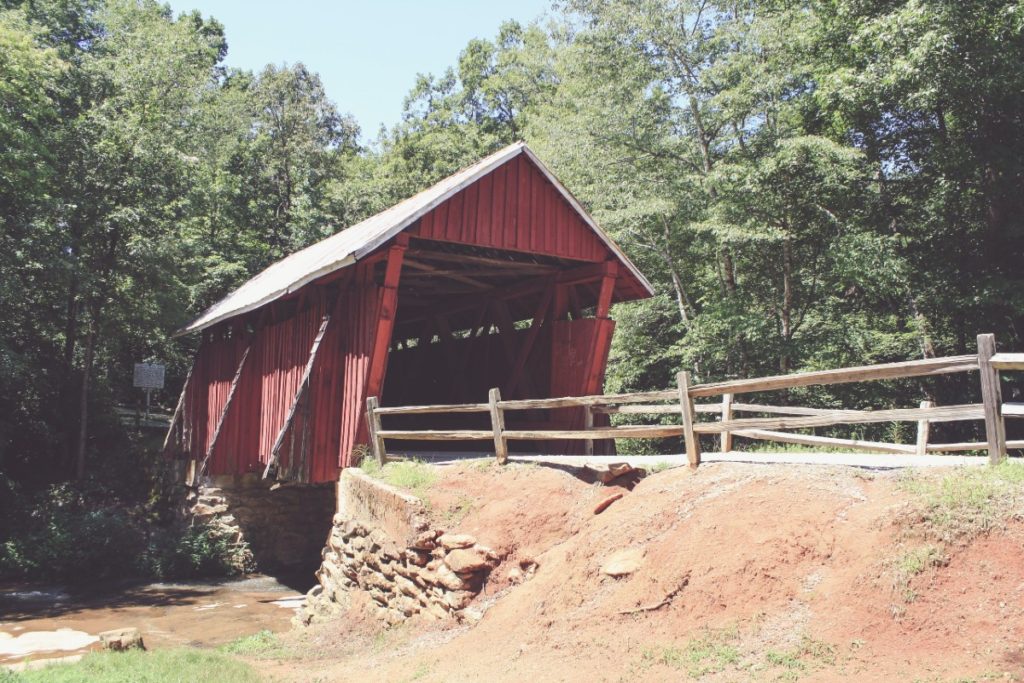 Our Oct. 2 photo, “Covered bridge,” was familiar to several alert readers, including Lexie Chatham of West Columbia who noted it was “the Campbell Covered Bridge in Landrum over Beaverdam Creek. It’s the only standing covered bridge remaining in S.C., and was named after a local landowner. Constructed of pine, it’s 38-feet long and 12-feet wide.”
Our Oct. 2 photo, “Covered bridge,” was familiar to several alert readers, including Lexie Chatham of West Columbia who noted it was “the Campbell Covered Bridge in Landrum over Beaverdam Creek. It’s the only standing covered bridge remaining in S.C., and was named after a local landowner. Constructed of pine, it’s 38-feet long and 12-feet wide.”
Jay Altman and Daniel Brennan, both of Columbia; Will Bradley of Las Vegas, Nevada; Larry Cannon of Simpsonville; Don Clark and Bill Segars, both of Hartsville; George Graf of Palmyra, Va.; Wayne Beam, now of Clemson; Barry Wingard and Jacie Godfrey, both of Florence; Allan Peel of San Antonio, Texas; Steve Willis of Lancaster; David Lupo of Mount Pleasant; Robert Behre of Charleston; Elaine Huff-Lowe of Inman; Kevin Mertens of Greenville; Steven Rowe of Alamogordo, N.M.; Henry Eldridge of Tega Cay; Matthew Brady of North Charleston; Debbie Causey of North Myrtle Beach; and Penny Forrester.
Graf noted, “This covered bridge turned a 25-mile, all-day trip for some into a trip that could be made in an hour instead. Until Campbell’s Covered Bridge ridge was built, people, horses and wagons crossed the stream here — Beaverdam Creek — at a nearby shoal.”
FOR HALLOWEEN: Peel provided these fun facts: “Now owned by Greenville County, it is the last surviving covered bridge in South Carolina. Permanently closed to traffic in the early 1980, it was added to the National Register of Historic Places in 2009. A little known fact about Campbell’s Covered Bridge was that it was featured in a scene in an obscure 1981 horror film called ‘A Day of Judgement’ by Earl Owensby. You can watch the entire movie here on YouTube. If you would rather not spend the 1-hour 37 minutes needed to watch the movie, just skip ahead to just before the 17:00 minute mark (from the start of the film) to see a rather dark view of the angel of death driving a horse buggy across the Campbell Covered Bridge. Spooky!”
- Send us a mystery: If you have a photo that you believe will stump readers, send it along (but make sure to tell us what it is because it may stump us too!) Send to: feedback@statehousereport.com and mark it as a photo submission. Thanks.
Charleston Renaissance led to Lowcountry cultural boom
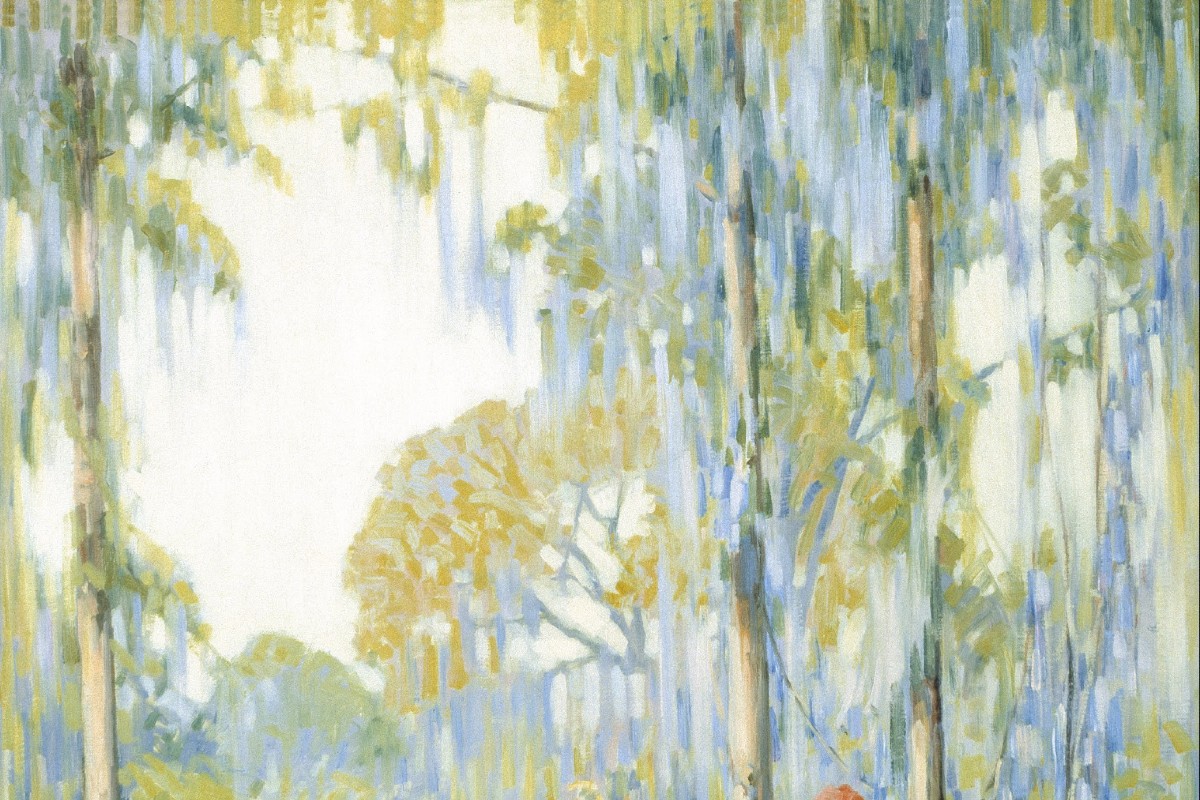
By Skyler Baldwin | Between World Wars I and II, the city of Charleston experienced a boom in the arts as writers, architects, artists, musicians and historical preservationists came together to represent and improve the city. This “Charleston Renaissance” period was part of a greater interwar artistic movement known as the Southern Renaissance that swept through the region. Today, it is credited with helping to kickstart the city’s tourism industry.
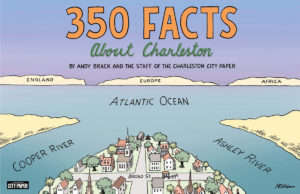 ORDER TODAY: Copies of a new book of historical facts about Charleston, aptly titled 350 Facts About Charleston, are in Lowcountry-area bookstores now, but if you can’t swing by, you can order a copy online today.
ORDER TODAY: Copies of a new book of historical facts about Charleston, aptly titled 350 Facts About Charleston, are in Lowcountry-area bookstores now, but if you can’t swing by, you can order a copy online today.
Smith remembered as a catalyst for the Charleston Renaissance
Alice Ravenel Huger Smith, born 1876, was a native artist and lifelong resident of Charleston. While she was primarily self-taught, she is best remembered for her scenic views of Charleston streets and poetic marsh vistas that capture the mystical aura of the Lowcountry. Hoping to convey an essential idealized representation of her subjects, she painted almost exclusively in watercolor from 1924 on. She, along with her associates, Elizabeth O’Neill Verner, Alfred Hutty, and Anna Heyward Taylor, was at the center of Charleston’s artistic reawakening during the early 20th century as a founding member of the Charleston Etcher’s Club and the Southern States Art League, as well as being involved in the Historic Charleston Foundation, Carolina Art Association, and Music and Poetry Society. Her work can be found today in many notable collections, such as the Brooklyn Museum, the Ogden Museum of Southern Art and the de Young Fine Arts Museums of San Francisco.
Painter, preservationist is a leader of rebirth of Charleston arts
Elizabeth O’Neill Verner was born in 1883 in Charleston, first studying art with Alice Ravenel Huger Smith and later enrolling at the Pennsylvania Academy of Fine Arts. In 1907, she married E. Pettigrew Verner; however, it wasn’t until 1925 that she would become a professional artist and the sole supporter for her children. She became a white portraitist known for representing African-Americans, especially the city’s flower vendors, and illustrated DuBose Heyward’s 1925 novel, Porgy. She came to specialize in drawings of historic buildings in effort to preserve the history of the city from her studio and home at 38 Tradd St. Her work is held by the Metropolitan Museum of Art, the Smithsonian American Art Museum and others across southeastern America. South Carolina’s highest arts award is named for her.
Hutty shows “decay and decrepitude” in his art
Renowned artist Alfred Heber Hutty, a northerner, is closely identified with the Charleston Renaissance of the 1920s because he rarely idealized the city, choosing instead to show the “decay and decrepitude” around him with his impressionistic oil paintings of Charleston streetscapes. He also depicted live oaks draped with Spanish moss, dilapidated old buildings and animated African Americans. In 1919, Hutty discovered Charleston while looking for a warmer place to spend his winter months. He embraced Charleston’s beauty and lifestyle and for the rest of his life, he alternated homes between summers in Woodstock, N.Y., and winters in Charleston. Today, Hutty’s work can be found around the state and in the Library of Congress, with the largest collection owned by the Gibbes Museum of Art.
Printmaker seen as one of the leading Charleston Renaissance artists
Anna Heyward Taylor was born in Columbia in 1879 as one of eight children of a surgeon who served in the Civil War in the Army of Northern Virginia. She received an education from the South Carolina College for Women and graduated in 1897 before traveling around Europe to study art between 1903 and 1917. She then served in the American Red Cross in France and Germany during World War I, returning to America and settling in Charleston in 1920. There, she became known for her prints highlighting life in the Lowcountry, including agricultural subjects both past and present, local fauna and flora, architecture, street scenes and the city’s tradespeople. Alongside Alice Smith, Elizabeth O’Neill Verner and Alfred Hutty, Taylor is today considered one of the four leading artists of the Charleston Renaissance.
Skyler Baldwin, a staff writer of the Charleston City Paper, contributed to 350 Facts About Charleston, from which these entries are excerpted.
ABOUT STATEHOUSE REPORT
Statehouse Report, founded in 2001 as a weekly legislative forecast that informs readers about what is going to happen in South Carolina politics and policy, is provided to you at no charge every Friday.
Meet our team
- Editor and publisher: Andy Brack, 843.670.3996
- Statehouse correspondent: Lindsay Street
Donate today
We’re proud to offer Statehouse Report for free. For more than a dozen years, we’ve been the go-to place for insightful independent policy and political news and views in the Palmetto State. And we love it as much as you do.
But now, we can use your help. If you’ve been thinking of contributing to Statehouse Report over the years, now would be a great time to contribute as we deal with the crisis. In advance, thank you.
Buy the book
Now you can get a copy of editor and publisher Andy Brack’s We Can Do Better, South Carolina! ($14.99) as a paperback or as a Kindle book ($7.99). . The book of essays offers incisive commentaries by editor and publisher Andy Brack on the American South, the common good, vexing problems for the Palmetto State and interesting South Carolina leaders.
More
- Mailing address: Send inquiries by mail to: 1316 Rutledge Ave., Charleston, SC 29403
- Subscriptions are free: Click to subscribe.
- We hope you’ll keep receiving the great news and information from Statehouse Report, but if you need to unsubscribe, go to the bottom of the weekly email issue and follow the instructions.
- Read our sister publications: Charleston City Paper (every Wednesday) | Charleston Currents (every Monday).
- © 2020, Statehouse Report, a publication of City Paper Publishing, LLC. All rights reserved.


